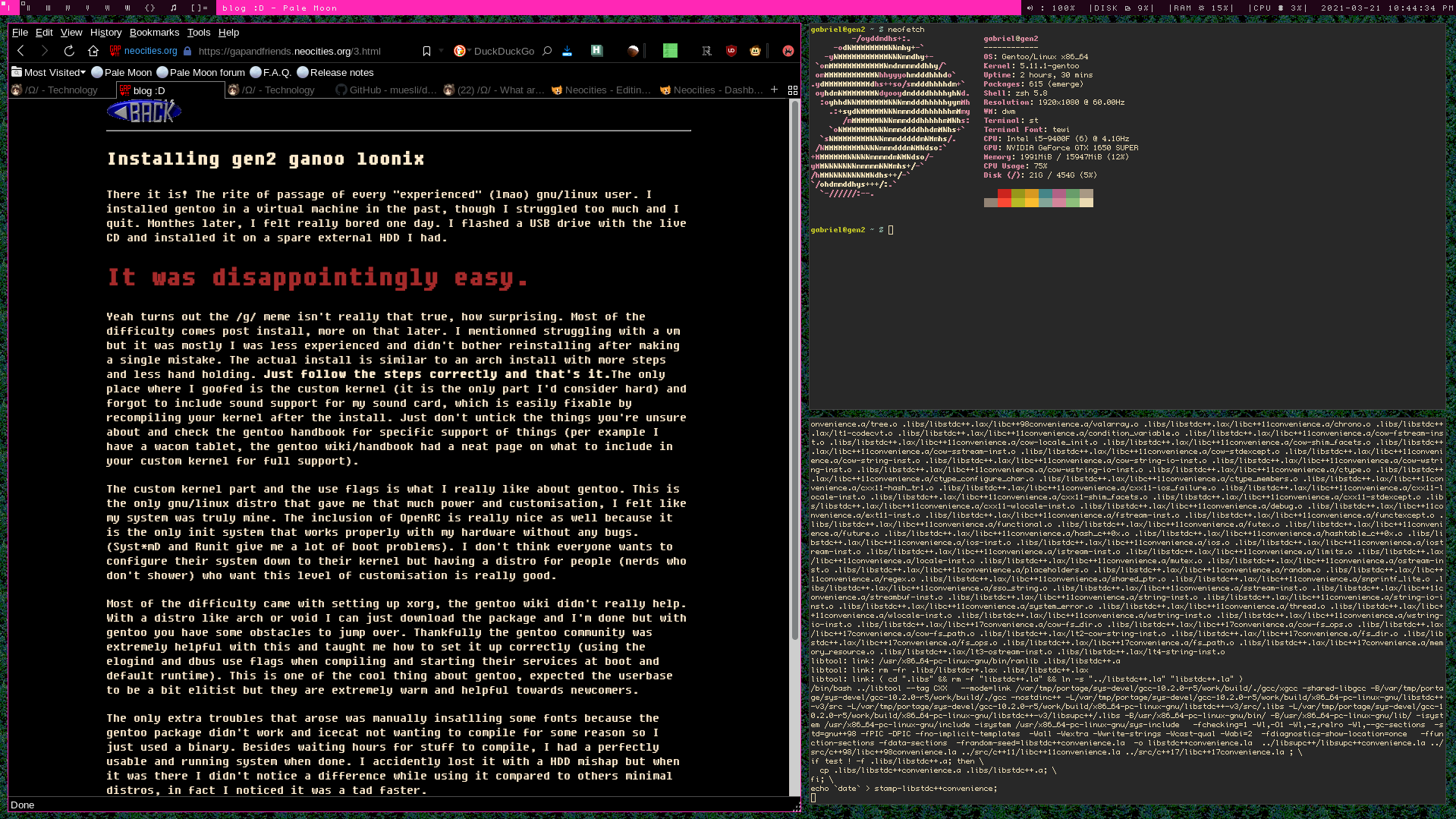
There it is! The rite of passage of every "experienced" (lmao) gnu/linux user. I installed gentoo in a virtual machine in the past, though I struggled too much and I quit. Monthes later, I felt really bored one day. I flashed a USB drive with the live CD and installed it on a spare external HDD I had.
Yeah turns out the /g/ meme isn't really that true, how surprising. Most of the difficulty comes post install, more on that later. I mentionned struggling with a vm but it was mostly I was less experienced and didn't bother reinstalling after making a single mistake. The actual install is similar to an arch install with more steps and less hand holding. Just follow the steps correctly and that's it.The only place where I goofed is the custom kernel (it is the only part I'd consider hard) and forgot to include sound support for my sound card, which is easily fixable by recompiling your kernel after the install. Just don't untick the things you're unsure about and check the gentoo handbook for specific support of things (per example I have a wacom tablet, the gentoo wiki/handbook had a neat page on what to include in your custom kernel for full support).
The custom kernel part and the use flags is what I really like about gentoo. This is the only gnu/linux distro that gave me that much power and customisation, I felt like my system was truly mine. The inclusion of OpenRC is really nice as well because it is the only init system that works properly with my hardware without any bugs. (Syst*mD and Runit give me a lot of boot problems). I don't think everyone wants to configure their system down to their kernel but having a distro for people (nerds who don't shower) who want this level of customisation is really good.
Most of the difficulty came with setting up xorg, the gentoo wiki didn't really help. With a distro like arch or void I can just download the package and I'm done but with gentoo you have some obstacles to jump over. Thankfully the gentoo community was extremely helpful with this and taught me how to set it up correctly (using the elogind and dbus use flags when compiling and starting their services at boot and default runtime). This is one of the cool thing about gentoo, expected the userbase to be a bit elitist but they are extremely warm and helpful towards newcomers.
The only extra troubles that arose was manually insatlling some fonts because the gentoo package didn't work and icecat not wanting to compile for some reason so I just used a binary. Besides waiting hours for stuff to compile, I had a perfectly usable and running system when done. I accidently lost it with a HDD mishap but when it was there I didn't notice a difference while using it compared to others minimal distros, in fact I noticed it was a tad faster.
I wouldn't recommend this to a non experienced gnu/linux user. The amount of customisation is amazing but it takes some carefulness and knowledge. The userbase is extremely warm and helpful, though the wiki is a bit outdated on some things and lacks a bit in parts. It is indeed very time consuming, compared to it, arch just works, I wouldn't recommend it if you're impatient or without time in your hands. Besides these, there is no distro like gentoo (or gentoo based stuff) and I really liked it. It was a good learning experience. I recommend this wholeheartedly if you're an experienced linux lover with some time in their hands.
